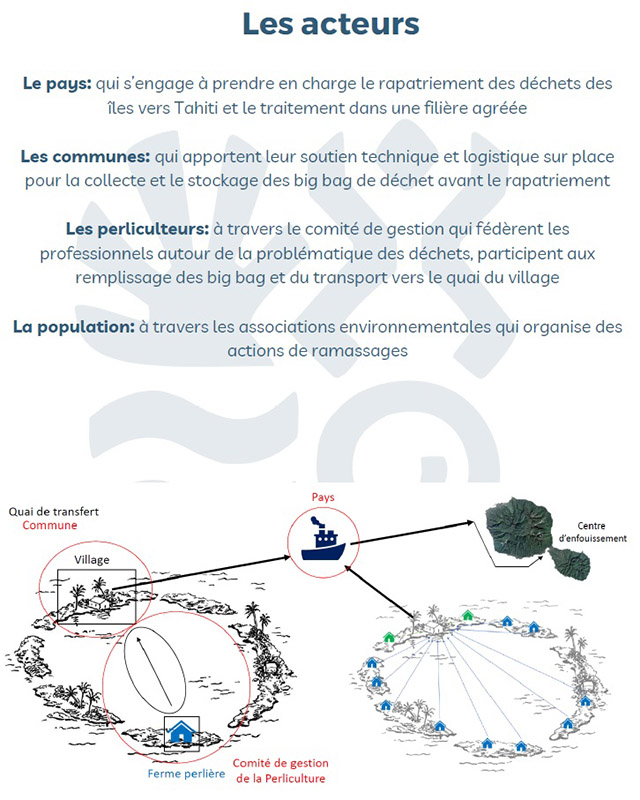French Polynesia’s pearl industry, a cornerstone of the local economy, faces mounting environmental challenges from decades of accumulated farming waste. For nearly 40 years, debris from pearl farms has contaminated lagoons and atolls, tarnishing the reputation of the famed Tahitian Pearl. In response, the government has launched an ambitious cleanup operation to address this ecological crisis.
Environmental Wake-Up Call
The pollution crisis has prompted:
- Immediate action: Distribution of 1,300 waste collection bags across the Tuamotus, Gambiers, and Leeward Islands (May-July 2021)
- Record cleanup: Over 100 cubic meters of waste collected in Apataki through collaboration between farmers and local association Te hotu no te Fenua no Apataki
- Emergency measures: Waste transport to Tahiti’s Punaruu Landfill (C.E.T.) for temporary disposal
Multi-Stakeholder Approach
The 2020 Pearl Farming Seminar established a framework involving:
✓ Municipal governments
✓ Management committees
✓ Pearl farmers
✓ Local communities
✓ National authorities
Sustainable Solutions in Development
While immediate waste burial addresses the crisis, long-term strategies include:
- Material substitution: Phasing out plastic farming equipment
- Industry funding: New financial contributions from pearl farmers
- Legislative reform: Upcoming amendments to pearl farming regulations
*”The math is sobering – an average farm generates 2 tons of waste annually,”* officials note. The government is developing a comprehensive plan to:
- Remove historical waste (40+ years of accumulation)
- Establish efficient processing systems
- Implement preventive measures against new pollution
This ecological initiative represents a critical step in preserving both French Polynesia’s marine ecosystems and the premium status of its signature black pearls. As cleanup efforts continue, the focus shifts to creating sustainable industry practices that will protect these fragile island environments for generations to come.


Leave a Reply